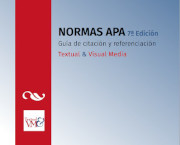The use of 360º storytelling in non-fiction stories:
elements that contribute to place illusion
Keywords:
Immersive Journalism, 360-degree video, Virtual Reality, VR, Place Illusion, immersionAbstract
De la Peña et al. (2010) called Immersive Journalism to a new form of news production, or non-fiction content, that allows the user enjoys a first-person experience of the story’s events. This is possible thanks to the use of the VR/360 storytelling and to the consumption with a VR headset. However, the aim of this work is to identify which strategies are applied by media to their 360-degree videos to promote the Place Illusion that the user could experience when he/she is immersed in the scene. Through a comparative case study -We who remain, Foro de la Colonia and The Party-, it was possible to find out several strategies used by media on their contents, such as the simulated face to face, direct allusions to the viewer and the adjustment of the camera height to the eyes/height of the story’s protagonists.























